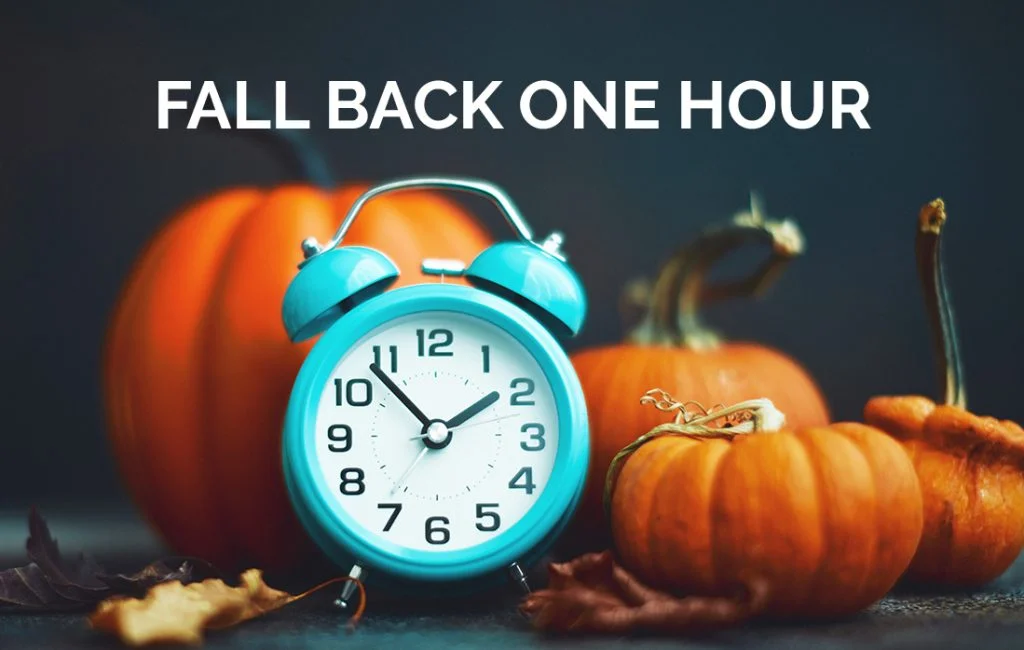
November 5 is right around the corner, where once again we will push our clocks back an hour and return to standard time. Gaining this hour of sleep may bring some joy, but it can also bring disrupted sleep, shorter days, and for some, the possibility of an increased risk of seasonal depression or seasonal affective disorder (SAD).
If the latter two sound like you, you’re not alone – as we near the annual change, people on social media are sharing their tips for the upcoming transition, mentioning their own struggles with depression during this time. These videos include checklists of simple things that become difficult during this change, including remembering to drink water, shower, and exercise.
Here’s what to know about how daylight saving time might impact seasonal depression and your sleep – so you can arm yourself with the tips to combat it this fall.
What is Seasonal Depression?
Seasonal Affective Disorder (SAD), which the Mayo Clinic defines as “a type of depression that’s related to changes in seasons,” is common around this time. SAD is most commonly diagnosed at the beginning of fall and continuing throughout the winter months, but it can pop up during spring and summer as well (though that’s less common). It’s also not uncommon for symptoms to start out mild and get worse as the season progresses.
The Mayo Clinic notes that common symptoms can include:
- Feeling listless or sad, or generally feeling sluggish
- Losing interest in activities or hobbies you previously enjoyed
- Trouble sleeping (for example, oversleeping, or experiencing insomnia, though the latter tends to be more common in those who experience spring or summer SAD)
- Having difficulty focusing or concentrating
Daylight Saving Time and Seasonal Depression: What’s the Connection?
In 2016, a study at AARHUS University in Denmark, found a link between a rise in depression and the end of DST. The study explained that depression diagnoses were 8 percent higher the month after returning to standard time.
One of the researchers, Søren D. Østergaard, stated in a press release, “We are relatively certain that it is the transition from daylight saving time to standard time that causes the increase in the number of depression diagnoses and not, for example, the change in the length of the day or bad weather. In fact, we take these phenomena into account in our analyses.”
While that study couldn’t pinpoint the exact reason for why there’s an increase in depression, a common theory is that it has to do with how our circadian rhythms are greatly affected by light. As Dr. Shelby Harris, Sleepopolis’ director of sleep health, explains, “SAD is very much linked to light exposure, and the sudden change in less light at night can exacerbate anyone starting to suffer.”
How Seasonal Depression and DST Impact Your Sleep
As noted above, sleep problems can be common with seasonal depression. But even if you don’t experience SAD, it’s common to experience an uptick in sleep problems in the transition after daylight saving time ends.
Dr. Harris notes that the shorter days and darker nights encourage more dozing (there’s a reason winter is called “cozy season”). “More dozing and less movement outside can make us have more issues with staying asleep,” Dr. Harris says. “If SAD is a problem, we often see trouble with awakenings and early morning awakenings, and dozing and the time change can worsen that.”
Luckily, this may be one of the last times we have to set the clocks back. If the Sunshine Protection Act passes, it’ll bring an end to this twice-yearly tradition. (Unfortunately, as of now, the bill has come to a standstill in the House.)
Tips on How to Adjust after Daylight Saving Time
You’re not doomed to weeks of sleepless nights. As you ease into the return to standard time, here are some tips and tricks from Dr. Harris that may help.
Expose yourself to light.
One of the reasons people experience SAD is due to the reduced level of sunlight. While “falling back” eliminates an hour of sunlight in the evening, try to take advantage of the earlier daylight by taking walks in the morning. Dr. Harris also recommends “using lights in the evening to help with early drowsiness from lack of sun, and then dim all lights and screens and hour before bedtime.”
Adjust your bedtime.
Get ready for the change ahead of time. Dr. Harris recommends starting Thursday night by moving your bedtime later by 20 minutes. On Friday, add another 20 minutes so that by Saturday night you’re going to bed an hour later than the week before. This will allow your body to begin adjusting for the clocks falling back on Sunday.
Try adjusting your schedule if possible.
Aside from your bedtime, gradually push back the time you’re doing any activity or event that has a set time in your day. Dr. Harris notes meal times, naps, and activities as some to think about adjusting. “While this may not always be possible, if you can, do it.”
Slow down.
Understanding that there is a change coming up is important, but giving yourself time to adjust is just as important to remember.
Dr. Harris recommends giving yourself one to two weeks after the transition to adjust. “If your sleep hasn’t improved after two weeks, talk with your doctor, and consider seeing a sleep doctor well-versed in circadian rhythms treatments,” she says.

























